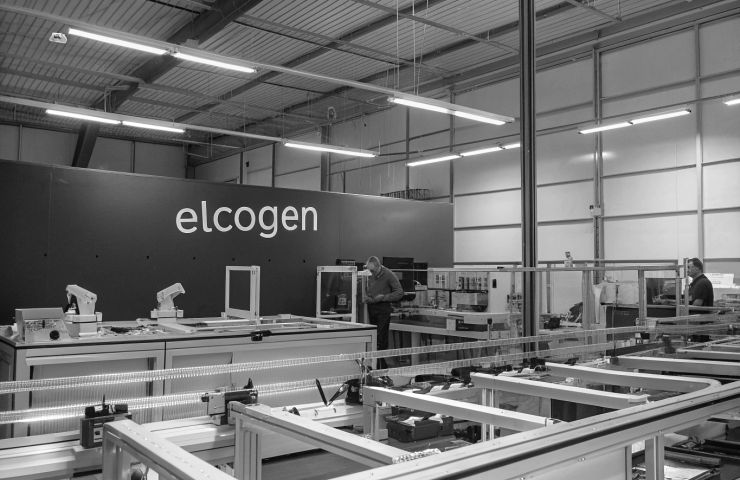
Solid Oxide Fuel Cells Scale-Up: Elcogen Opens 360 MW Facility in Estonia
October 7, 2025It feels like overnight, but it’s actually been a twenty-plus-year adventure. On September 17, 2025, Elcogen—the trailblazer in solid oxide fuel cells—fired up its spanking-new high-volume manufacturing site just outside Tallinn. This isn’t merely another factory; it’s the moment they went from proof-of-concept to full-throttle clean energy manufacturing, jumping from 10 MW of capacity to a jaw-dropping 360 MW in one go. For context, that’s enough green power to keep hundreds of factories humming or tens of thousands of households bright and warm—all without a whiff of fossil gas.
But let’s rewind to 2001. Back then, Elcogen Estonia was just a small R&D outfit tinkering with advanced ceramics. Fast-forward through strategic alliances and pilot installs at chemical plants, data centers, even naval testbeds across Northern Europe, and by 2024 they’d proven their systems could deliver both reliability and top-tier efficiency. Armed with €75 million from industry heavyweights and European grants, they were poised to ride the unstoppable wave of green hydrogen solutions.
Why does this facility matter for green hydrogen?
If you’ve been following the energy transition, you know green hydrogen is the golden ticket for decarbonizing the toughest sectors—think steelmaking, ocean shipping, heavy transport and high-temperature industrial heat. Yet it’s always stumbled on cost and scaling hurdles. Elcogen’s new gigafactory tackles both head-on by:
- Mass-producing both SOFC (fuel cells) and SOEC (electrolysis) modules on a single integrated line.
- Leveraging 3D-printing for complex ceramic parts, cutting waste and speeding up assembly.
- Embedding real-time digital monitoring to nip defects in the bud and slash downtime.
The upshot? Customers can order turnkey systems in bulk—finally moving hydrogen from a niche curiosity to a mainstream clean energy carrier.
Deep dive into the technology
Here’s what gives solid oxide fuel cells and electrolysis units their edge:
- Scorching operating temperatures
While many fuel cells linger around 80–100 °C, SOFCs roar at 800–1 000 °C. That heat lets them run on a variety of fuels—natural gas, biogas or even liquid fuels—without needing precious-metal catalysts. - Two-way street
Those same ceramic stacks flip roles from power generation to hydrogen production when you feed them electricity, so one piece of hardware does double duty. - Waste heat recovery
All that heat isn’t wasted—it’s captured for district heating or industrial processes, pushing overall efficiency past 80 %.
On the factory floor, each cell goes through sealing, stack integration and rigorous thermal cycling tests to ensure it thrives under real-world pressures. It’s a carefully choreographed routine of materials science and precision engineering that yields a product built to last.
Who’s behind the breakthrough?
This gigafactory wouldn’t exist without a handful of big-name backers:
- Baker Hughes (USA) – Poured in €30 million and will weave SOFC modules into their global industrial power solutions.
- HD Hyundai (South Korea) – Invested €20 million, aiming to equip their heavy machinery and vessels with fuel cell units for offshore and shipboard trials.
- European Innovation Fund – Contributed €25 million, earmarked for next-gen materials R&D and digital manufacturing upgrades.
Enn Õunpuu, CEO of Elcogen, puts it best: “Back in the early days, everyone said ceramic fuel cells were too fragile or too pricey to scale. Today, this gigafactory shatters that narrative—it’s proof that clean hydrogen’s future is right around the corner.”
Real-world impact you can measure
Beyond all the high-tech gear, here’s what this expansion means in practice:
- 300+ new local jobs in engineering, production and R&D—boosting Estonia’s clean-tech talent pool.
- Shorter supply chains for European fuel cell manufacturing, cutting lead times and transport emissions.
- Major decarbonization gains for industries behind over a third of Europe’s CO₂ output, now armed with turnkey clean energy kits.
- A scalable blueprint that Elcogen can replicate or license worldwide, accelerating the hydrogen economy everywhere.
Whether it’s retrofitting port cranes with SOFC power units or co-locating SOEC plants at steel mills for on-site hydrogen, the practical possibilities are already unfolding.
What’s next on the horizon?
Looking ahead, Elcogen plans to:
- Integrate renewables—linking Baltic offshore wind and local solar farms directly to the production line, with an eye on sub-€2/kg green hydrogen costs.
- Lead maritime trials—partnering with ferry and cargo lines to slash shipping emissions by up to 90 % on short-sea routes.
- Ramp up automation and AI—introducing cobots and AI-driven controls to boost line capacity by 30 % and cut defects by 20 % by 2027.
- Build a digital twin—modeling the entire factory in real time to optimize energy use, maintenance and lifecycle costs, making industrial decarbonization a predictable, manageable goal.
Beyond the factory gates, this hub could spark a European hydrogen corridor—linking ports, refueling stations and industrial centers with pipelines or green ammonia exports. Estonia—already a leader in e-governance and digital innovation—now boasts a clean-energy crown jewel bridging technology and sustainability.
“We’re not just building a plant,” says Enn Õunpuu. “We’re crafting a template for energy independence powered by green hydrogen solutions.”
I can’t wait to see how this chapter unfolds—especially as similar facilities spring up across the continent. If you’re tracking the clean-energy revolution, keep your eyes on Tallinn. Elcogen’s gigafactory could be the spark that lights the next wave of sustainable industry worldwide.



 With over 15 years of reporting hydrogen news, we are your premier source for the latest updates and insights in hydrogen and renewable energy.
With over 15 years of reporting hydrogen news, we are your premier source for the latest updates and insights in hydrogen and renewable energy.